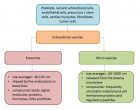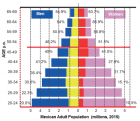About University of Chile
University of Chile
Articles by University of Chile
Canine Distemper Virus detection based in Hemaglutinine Gene as target in Reverse Transcriptase-Polymerase Chain Reaction
Published on: 27th December, 2018
OCLC Number/Unique Identifier: 7964755439
Canine Distemper have become a major concern within the veterinary clinical work. Thus, the appearance of many cases of canine distemper in adult animals with their vaccination plan up to date has alarmed veterinarians. Many cases of canine distemper have become a major concern within the clinical veterinary task. The purpose of this work was to detect the gene of hemagglutinin of the virus canine distemper, by using the Polymerase Chain Reaction associated with Reverse transcription (RT-PCR), as confirmation of the clinical diagnosis of disease. For this, peripheral blood samples of animals were used clinically patients and were grouped according to their date of extraction and using vaccines commercial as control.
The results allow to demonstrate a high sensitivity of the technique, besides allowing the use of samples up to seven days of storage at 4°C, despite the fragility of RNA viral.
Detection of canine distemper virus haemagglutinin gene in field samples and its high sensitivity, suggests studying its use as a diagnostic tool complementary to the clinical diagnosis of canine distemper in our country.
Use of the Reverse Transcription-Polymerase Chain Reaction for differential detection of two lineages of the canine distemper virus in Chile
Published on: 4th March, 2019
OCLC Number/Unique Identifier: 8056345040
Worldwide, Canine Distemper Virus (CDV) infection is a highly prevalent disease with high morbidity and mortality. CDV causes a multisystemic disease in a wide range of hosts including 9 families of mammals among them some primates, cetaceans and numerous carnivores. It presents a high tropism for lymphoid, neurological and epithelial tissue, leading to an infection of almost all systems, so the clinical signs observed are very varied. The diagnosis is made based on the clinical presentation of the disease, which considers a variety of signs and must be confirmed by a laboratory diagnostic method. The molecular technique called Reverse Transcription Polymerase Chain Reaction (RT-PCR) has been used to characterize viral strains based on the basis of genetic differences on the hemagglutinin (H) gene of CDV has allowed the identification of 14 circulating lineages in the world. Two lineages, namely the America-1 and the Europe-1/South America-1 have been described in Chile. The goal of this work was to implement a multiplex RT-PCR protocol, which was built on the in silico design of primers based on the H gene nucleotide sequences stored in the Genbank® database. This method was capable of detecting the previously described two circulating genetic lineages of CDV in a differential way providing a supporting diagnostic tool for epidemiological studies in the country. These results suggest that the primers described here are extremely selective for the above-mentioned lineages. In addition, our initial screening indicated that most analyzed clinical samples corresponded to the America-1 lineage, stressing the need for a continuous surveillance in order to properly address the prevalence of both lineages in Chile.
Fiesta vs. Stress Condition the Incidence and the Age at Menarche. Forty Years of Research
Published on: 5th August, 2025
Introduction: The annual rhythm of menarche was proposed to be due to climatic annual variations. The discovery that peaks of incidence of menarche were found in the same months in the North and the South Hemispheres made us to think this hypothesis was not correct. Then we proposed that periods of study (stress) and vacation (relaxation, fiesta) were better factors for this rhythm. If this is so, days of fiesta should present more menarches than current days. In the second hypothesis the age at menarche should be modified by the vacation-study rhythm. Thus, I tested two hypotheses: I) This rhythm and the age at menarche are conditioned by climate factors mostly seasonal variations. II) the contrast between expectancy of fiesta (relaxation) and stress is the main factor of the rhythm and the variation on the age at menarche during the year.Method: The monthly incidence and age at menarche were obtained from samples of girls in Santiago (Chile), Medellín (Colombia), Debrecen (Hungary), Chennai (India) with data collected directly in these countries. A sample from Barrinhas (Riberao Preto, Brazil) was taken from literature. The climatic hypothesis was tested knowing the main climatic parameters by the latitude of these cities. The annual study-vacation rhythm was obtained from the academic calendar at any city and from direct information of our colleagues working in these cities. A correlate between the climatic rhythm and the study-vacation rhythm with the incidence or age at menarche complete the refutation or affirmation of the hypotheses. Also, the expected peaks of menarche at significance fiesta-days or the birthday were studied directly form the calendar of holidays or the cultural information given by our colleagues. Results: In the five samples taken individually or together there were clear contradictions with the climatic hypothesis. On the contrary the fiesta-stress hypothesis shows a clear correlation with the monthly incidence and the age at menarche. Days of national, religious fiesta or the birthday showed greatly significant peaks of menarche. Conclusion: Data refute the climatic hypothesis of the annual rhythm of menarche and agree with the fiesta (vacation)-stress (study) hypothesis.

If you are already a member of our network and need to keep track of any developments regarding a question you have already submitted, click "take me to my Query."



















































































































































